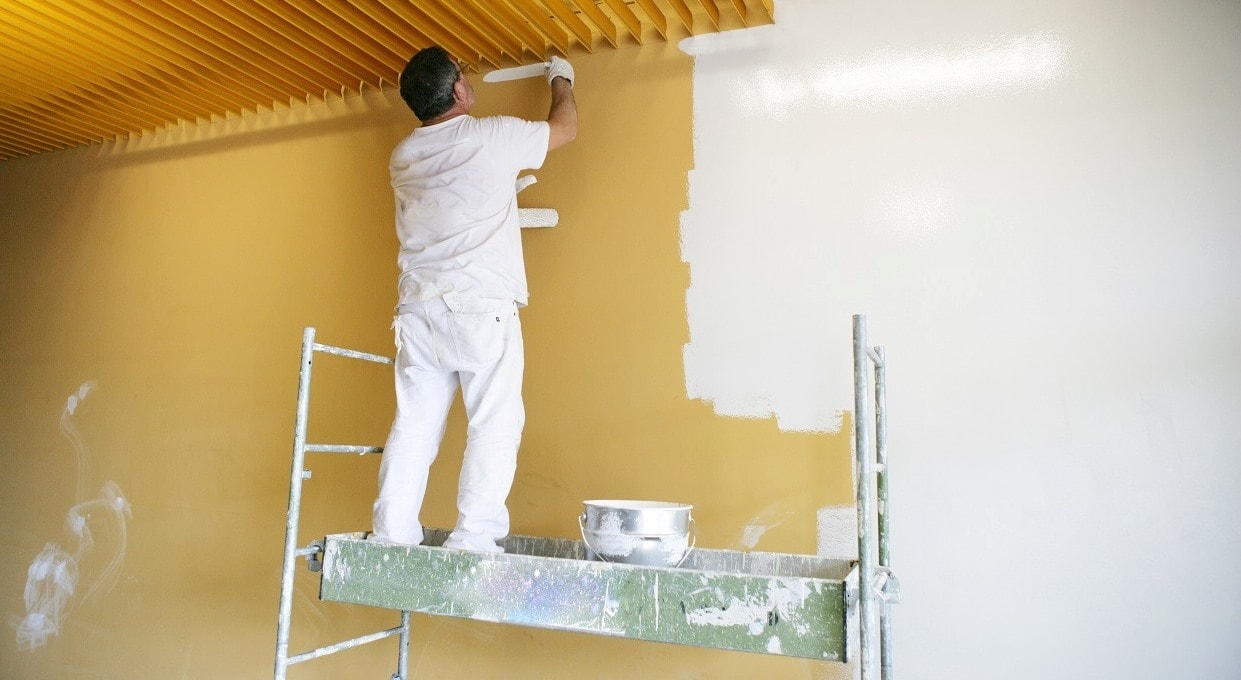Sometimes the wide variety of paint options can be confusing for consumers. Unless you are an experienced contractor, you may not understand the differences or why they even matter.
Two common types of paint are interior and exterior, each formulated to be used in specific conditions.
If you have found you accidentally used exterior paint on the interior of your house, you may be wondering about the implications. Let’s go over some of the differences between the two and discuss any potential issues you might encounter.
Table of Contents
The Difference Between Interior and Exterior Paint

The most glaring difference in the formulation for interior versus exterior paints is the additional chemicals added into exterior paints. These chemicals include fungicides, mildew-fighters, and UV-resistant additives in order to make them more resistant.
While these are important for making sure exterior objects can stand up against the elements, they also have a higher VOC. VOC stands for Volatile Organic Compounds, which accounts for the “chemical smell” you will encounter when painting or staining.
Interior paints are held to a higher standard in regards to VOCs because they need to be considered “safe for indoor use.” So what may happen when you use exterior paint inside is you will notice a very strong odor. The off-gassing can take several days longer with exterior paints so it’s best to avoid the area until you can no longer smell it before you decide on what your next step is.
Another major difference is the dry time. Because exterior paint contains added chemicals, its dry and cure time will generally be longer than interior paint. Also, the resilient exterior paints will dry with a very high shine which may not be the look you were going for.
Exceptions to the Rule
While you should always follow the manufacturer’s instructions when painting any area of your home, there are some instances where using exterior paint on an interior surface isn’t a bad idea.
For example, painting a garage wall (which could be considered both interior and exterior) with either paint type would be perfectly fine, especially because there is easily accessible ventilation by opening the garage door.
Also, if you have an exterior room – such as a mud room, sun room, poolhouse, or shed – these areas can take exterior paint just as well. In some cases, exterior paint is recommended for these rooms because they have more exposure to outside elements than an interior room.
Is It Harmful?
The biggest harm comes from the VOCs mentioned earlier. It can create an unpleasant, harmful odor that will encompass the interior room and will take several days to dissipate. In general, though, it will not harm your walls.
Some people opt for exterior paint on purpose because they believe that paint will last longer but they fail to take into account the differences in the products. There are plenty of high-durability indoor paints available on the market.
What to Do If You Use Exterior Paint Inside?

Ventilate the Area
You will not be able to take much action while the paint is still drying. The excess odors present with exterior paint can cause breathing problems if they are inhaled. Some issues that may occur include dizziness, nausea, and vomiting.
Using exterior paint indoors will make it more likely to experience these negative side effects, so make sure you double-check your paint batch before you apply it!
Make sure you ventilate the area as much as possible. Open windows, run fans and leave doors open that lead to the outside so these chemical vapors have a way to escape. Take special care to keep children and pets away from these rooms.
Decide on Your Plan
There are essentially two options you have with regards to exterior paint on interior walls. For once, you can let it dry and leave it as is. Once it is done off-gassing (releasing odor) it is usually just fine to leave it on your walls if you don’t mind the finish.
Alternatively, you can scuff the top surface of the paint (because exterior paints are usually high gloss) and repaint over it. It is not recommended that you “strip” the paint off your walls because this involves more unnecessary chemicals and can be quite a daunting task.
Repainting

If you’ve decided to repaint your wall with the appropriate interior paint, you need to prep your wall just as you did before. You can use a fine-grit sander to scuff the surface if the gloss is too high for your liking. This will make any paint and primer stick better.
Use an indoor-specific primer to prepare your walls for the right interior paint, and then repaint your walls as you normally would. You can save the leftover exterior paint for another project or donate it to a paint recycling facility.

